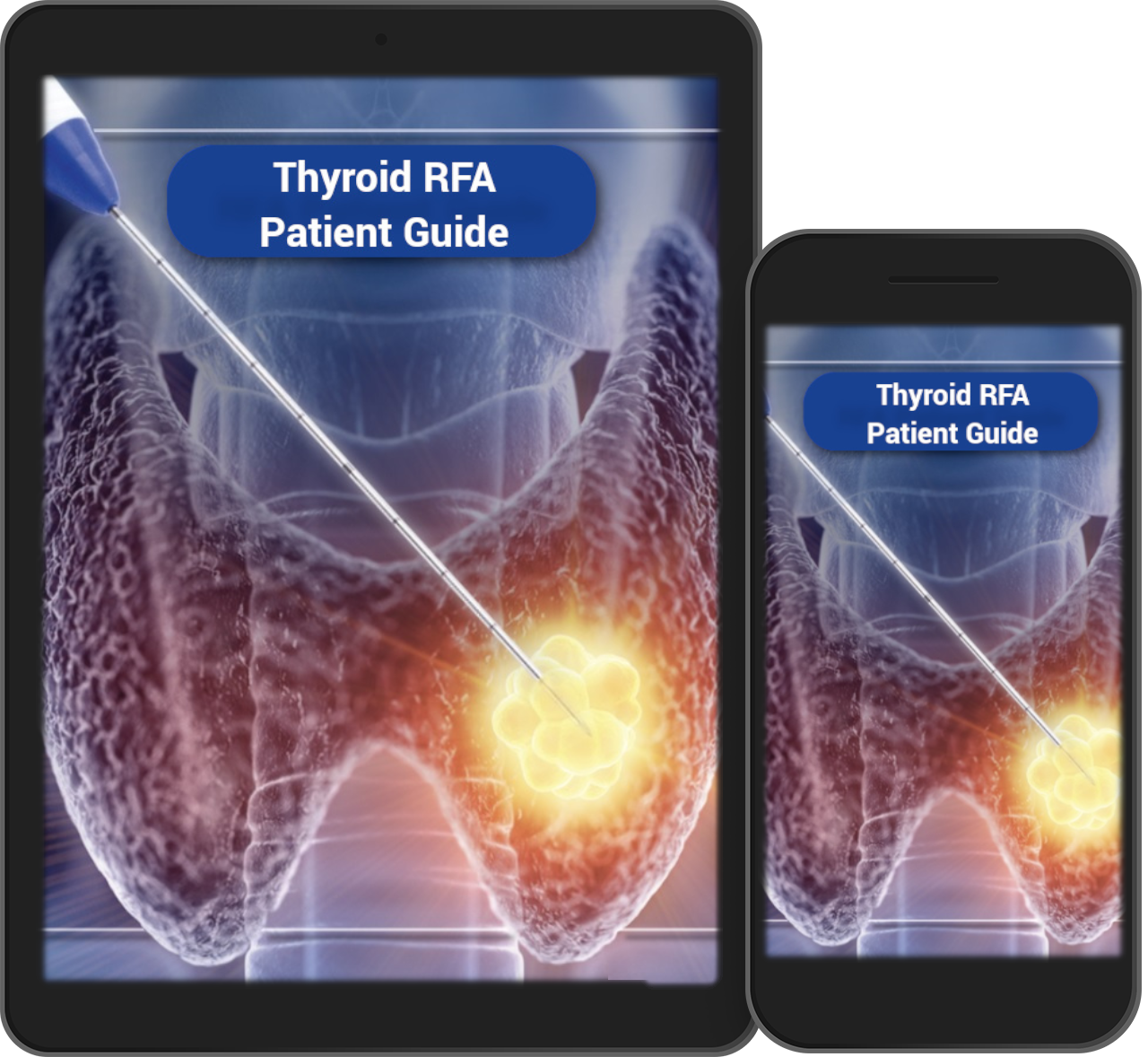What is the Indeterminate Nodule?
Indeterminate Nodule? Inconclusive? Undetermined Significance?... "What did my doctor say?"... "Am I going to be okay?"
Well, you've entered the Indeterminate Nodule Zone most likely. This is a place of great confusion and anxiety if you end up here. It is mainly the results of your doctor not taking the time to explain what exactly is going on. There are 4 basic results that you can get when you have an Ultrasound Guided Fine Needle Aspiration Biopsy (abbreviated FNA or FNAB or USFNA).
These are: 1) Not enough stuff, 2) Good, 3) Bad, and... 4) We don't really know.
It is more confusing than that, because the cytology results will report the findings using the Bethesda Category System for reporting Thyroid Cytology. This is a big fancy way of making the results consistent across all the places that look at them. So, the results fall into one of it's six categories which I will explain for you. The most confusing results are the undetermined category results which are categories III and IV below. These are the Indeterminate Nodules.

I - Nondiagnostic: Sometimes the material obtained during the FNA is not enough and the doctor reading the slides (cytopathologist) will say it is insufficient. This result is often reported as "non-diagnostic" of "insufficient". This is truly when there isn't enough stuff to allow the doctor looking at the specimen to feel good about saying what it really is. There are specific criteria for this and sometimes, in my experience doing thousands of these biopsies, is the result that you would expect to get. For more purely cystic nodules and other rare cases, you don't expect to get many "thyroid cells". The fluid cells are not specific to the thyroid always and sometimes don't give enough information to help determine what is going on. This result can be because of the type of cells found as just described or unfortunately because of lack of cells obtained during the procedure. This is the fault of the doctor performing the procedure, but is unavoidable. Even in the best of hands, there will be times when you just don't get anything even though everything was done perfectly. In my practice, I see this results less than 5% of the time with the two needle passes that I do for every nodule. When you get this result, the risk of malignancy is 1-4% since you don't really have great information and the general recommendation would be to repeat an Ultrasound Guided FNA.
II - Benign: This is the result you hope to get. What most people are not told is because of the technique of FNA not actually cutting away any tissue, there remains a small chance of having Thyroid Cancer despite this result. That risk is 1-3%, which means that you shouldn't be very worried, but it is possible. Most of the time, these nodules are going to be watched. These nodules if well documented as benign are often excellent candidates for Radiofrequency Ablation (RFA) which can ablate and shrink these down without a scar, general anesthesia, or the usual need for thyroid replacement medications.
III - Atypia of Undetermined Significance (AUS) or Follicular Lesion of Undetermined Significance (FLUS): This is one of the reasons you may have entered the indeterminate nodule zone. Both AUS and FLUS are cytology result types that are "undetermined" whether they are good (benign) or bad (malignant). That is because the corresponding benign and malignant nodules of these types look exactly the same when FNA is done. The only way to distinguish completely is to get tissue and see the behavior of the nodule's borders. This is generally only determined definitively after surgery when the pathologist evaluating the specimen can look carefully at all the edges. In the past, I would explain this to patients and tell them that there is 5-15% risk of malignancy with these results. Based on their other risk factors and history, we would then decide together whether surgery or observation made the most sense. This result based on the percentages, required many people to have surgery with a benign nodule that did not really need to have surgery. Today, however, there are newer molecular genetics test which can better help to determine who really needs surgery. Since there are multiple molecular genetic test being performed, the general results are this: you are lacking any genes associated with Thyroid Cancer and have the similar risk of Thyroid Cancer as a benign result (up to 5%) or you have a molecular genetic marker that has some reported association with Thyroid Cancer. Generally the report of the test will tell you what percentage risk that is. It is important to note that if you have not had molecular testing, you should know if there is a reason for that or if you just weren't offered this option.
IV - Follicular Neoplasm or Suspicious for a Follicular Neoplasm: This is a similar situation as in category III. It is unclear based on the findings whether this result is good or bad. There is no other physical way other than surgery to fully determine the difference. The only difference technically in this category is the risk of malignancy is slightly higher at 15-30%. Again, molecular genetic testing can decrease your risk down close to 5% or increase it to the percentage associated with the markers found. If you have gotten this result and were not offered molecular genetic testing, you should be discussing this reason with your physician.
V - Suspicious for Malignancy: This result is fairly straight forward. I have seen many patients be told it is suspicious for malignancy and think they were told it is malignant. Since the accepted risk of malignancy for this result is 60-75%, there is still reasonable chance that it is benign. While this has been lumped into "indeterminate" since it is undetermined whether it is truly cancer or not, I think that the average person hearing suspicious for malignancy will not be confused what this means. Since the odds of cancer are high enough, surgical intervention even if benign is not difficult to consider. The only confusion in this category is that often patients are a Category III or IV above and the results are somehow explained as "suspicious". This leads to the patient thinking suspicious for cancer, when that suspicion for Category III and IV is only 15-30%. It is important that you know if you are truly "suspicious for malignancy" on the cytology report, or your doctor explains an "indeterminate" result as "suspicious".
VI - Malignant: Obviously, this is the bad result. It carries of risk of malignancy of 97-99%, so there still is a tiny chance that your nodule is still benign. That being said, Thyroid Cancer is generally one of the most treatable cancers out there. You should be sure to find out the type of Thyroid Cancer you have, with Papillary and Follicular Thyroid Cancers being the most common and most treatable. Survival for Thyroid Cancer is measured in 20 year curves, rather than most cancer's 5 year curves. This is because Thyroid Cancer patient's survival is over 90% for 20 years! Once you are diagnosed with Thyroid Cancer, treatment is generally surgical, and so learning about what to look for in a surgeon may be your next steps.
Once you are thinking of surgery, go to "avoiding unnecessary thyroid surgery" for the next lesson.
Comment below if you have fallen into the noise and confusion of the indeterminate nodule! It can be quite stressful..




